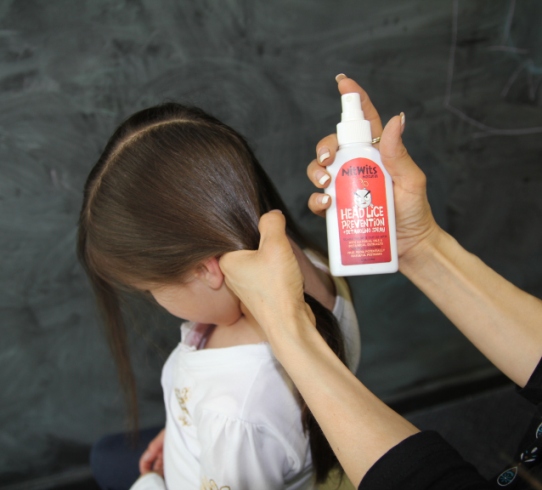 New Health Guide
New Health Guide
If you have a child in school, you probably know, or will soon realize the frustration that comes with head lice treatment and prevention. If you know nothing or a little about these intimidating little insects, then it is about time you did some research. The fact that your child does not have these insects yet does not guarantee that he or she will not have them in the future. According to many hairdressers, it is common to notice head lice on every third or fourth child that visits them.

Head lice can only be found on either human hair or head; they do not live on beddings, hats, furniture or carpets. As such, lice treatment on any other place other than the human head cannot eradicate these insects.
In this method, the head lice are removed using a fine-toothed comb by systematically combing through the hair. The best comb to use in this treatment is the one with a spacing of between 0.2 and 0.3mm between the teeth. Using a comb with a spacing of less than 0.19mm will have the lice trapped or crushed in between the teeth. This type of comb may be acquired at the local pharmacy or purchase online. This method does not require the use of any lotion. Additionally, it should be repeated regularly for effective results. The following procedure should be followed while wet combing to remove head lice:
It is commonly used in toiletries and cosmetics and has a good safety record. To use this lotion, you need to apply twice after every 7 days, with each application lasting for more than eight hours. After this, the lotion should be washed off with water and shampoo. This lotion kills head lice physically by blocking the tubes they use for breathing. Additionally, the dimeticone lotion also blocks the ways used by lice to pass out water. However, this head lice treatment option has not been proven to destroy unhatched lice eggs. Therefore, it should be applied regularly to kill the lice as they hatch.
You are supposed to apply this solution on the scalp and let it stay for about 10 minutes. The hair should then be combed systematically to remove the lice. The solution should then be washed off using water and shampoo. This should be repeated after every seven days to remove the lice that hatched recently. This lice treatment option is suitable for patients of asthma. However, it should not be used on children under 2 years old. Additionally, it should not be used by individuals suffering from any skin condition.
You should apply this spray on the scalp and let it stay there for about 15 minutes. The hair should then be combed using a fine toothed comb to remove the lice before washing the hair. This procedure should be repeated after seven days to kill any lice that just hatched. This head lice treatment option is not suitable for people suffering from asthma and skin conditions. Again, it should not be used on children under the age of 2 years.
This is a chemical insecticide that has been used to get rid of head lice for a long period now. The malathion in this insecticide kills the lice. The insecticide may be used on people of all ages as well as people suffering from skin conditions. It should be applied twice within an interval of seven days, with every application being left to stay for 12 hours. It should then be washed off with water and shampoo. You should also note that the creme rinse, anti lice shampoo and mousse forms of malathion and any other insecticide are not as effective as the liquids or lotions.
To use this method, you are supposed to grasp a lock of hair using a vinegar-saturated cloth and strip it downward in a bid to remove nits. This should be repeated until all the hair is treated. Alternatively, you may also soak the hair in vinegar, allow it to remain for some minutes and then comb it. You should then dry the hair using a towel.
Pyrethrum is obtained from the flowers of chrysanthemum and contain a natural insecticide known as pyrethrins. It kills the head lice by attacking their nervous system. However, some lice have become resistant to this pesticide. Therefore, the insecticide is not very effective. You are supposed to apply the product to the infested hair and allow it to stay for about 10 minutes. You should then add water in the hair to foam leather and rinse the hair. You should then comb the hair to remove lice. For better results, it is advisable to repeat this method after 7 to 10 days.
When this oil comes into contact with head lice, it clogs their breathing holes, hence suffocating them. For the best results, it should be applied to the hair and left to stay overnight under a shower cap. This is mainly because the lice have been proven to survive without air for hours. It is also advisable to comb the hair after this lice treatment to remove the lice as the oil is expected to loosen the lice from the hair shafts for easy removal.